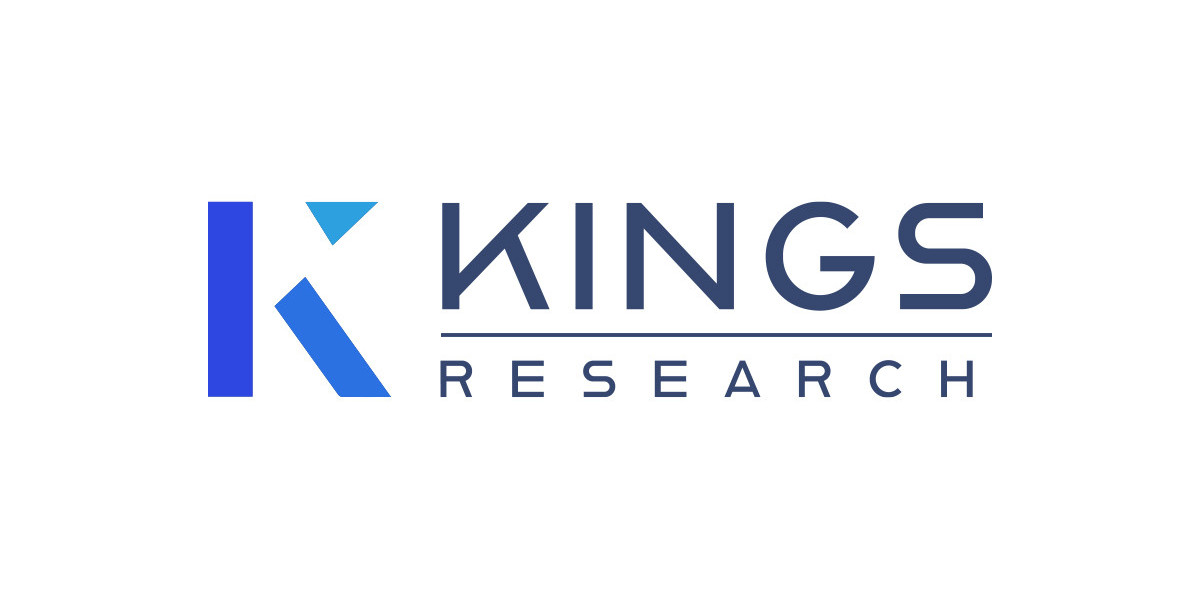In an era where industrial systems are increasingly connected, the security of operational technology (OT) has become mission-critical. The global operational technology security market, valued at USD 20.12 billion in 2024, is projected to surge to USD 22.15 billion in 2025 and further escalate to USD 47.79 billion by 2032, reflecting a compound annual growth rate (CAGR) of 11.61% through the forecast period. This remarkable growth underscores how OT security is transitioning from a niche domain to a mainstream priority across energy, manufacturing, utilities, transportation, and other critical sectors.
Market Overview
Operational technology security (or “OT security”) refers to the hardware, software, and services that protect industrial control systems (ICS), supervisory control and data acquisition (SCADA) systems, programmable logic controllers (PLCs), and other devices that monitor or control physical processes. Unlike traditional information technology (IT) systems, OT environments manage physical assets—such as power grids, chemical plants, pipelines, and manufacturing lines—where security failures can lead to safety incidents, downtime, environmental damage, or catastrophic system failure.
Historically, OT systems were largely isolated (“air-gapped”) and used proprietary protocols, making them less vulnerable to external attacks. Today, with the push toward Industry 4.0, smart factories, digital twins, and IIoT (Industrial Internet of Things) integration, OT networks are converging with IT landscapes. This blending of domains vastly widens the attack surface and forces organizations to rethink security from an integrated IT + OT perspective.
Given that many OT systems are long-lived, use legacy software, and were not originally built with cybersecurity in mind, securing them poses unique challenges. These systems often lack cryptographic controls, have limited computing headroom, and cannot afford downtime for patching or maintenance. As a result, the adoption of solutions tailored for OT constraints is now accelerating, fueling the market growth.
Market Drivers and Dynamics
Several interconnected dynamics drive the growth of the OT security market:
Escalating Cyber Threats to Critical Infrastructure
Cyberattacks targeting industrial systems—such as ransomware, supply chain attacks, malware targeting ICS, and nation-state campaigns—are on the rise. Attackers now view industrial systems as both strategic and lucrative targets, capable of causing physical or economic disruption. As the number and sophistication of threats grow, organizations are compelled to invest in OT security.IT/OT Convergence and Expanded Attack Surfaces
The merging of OT and IT networks, intended to extract operational data and optimize processes, results in increased exposure. A breach in the IT domain can cascade into OT, and vice versa. Many reports suggest that a high percentage of OT attacks originate from IT network compromise, making unified security across domains essential.Regulatory and Compliance Pressures
Governments and regulatory bodies are increasingly mandating cybersecurity standards for critical infrastructure. Sectors such as energy, utilities, transportation, water systems, and manufacturing face stricter oversight. Compliance with frameworks like IEC 62443, NIST, NERC CIP, and regional cybersecurity mandates creates a compelling incentive for organizations to adopt robust OT security measures.Growing Adoption of IIoT, Edge Computing, and Smart Infrastructure
As industrial operations adopt smart sensors, AI, analytics, digital twins, and edge computing, connectivity proliferates. More devices and endpoints mean more potential vulnerabilities. Organizations are under pressure to safeguard the integrity, availability, and confidentiality of these systems, thus increasing demand for OT security.Demand for Resilience and Business Continuity
Industrial operators tend to have near-zero tolerance for downtime. Any disruption to control systems or physical processes can result in enormous revenue losses, safety risks, or reputational damage. Therefore, proactive security and rapid incident response capabilities are critical.Shortage of Skilled OT Cybersecurity Talent
There is a recognized gap in professionals with domain knowledge of both industrial operations and cybersecurity. This fuels the demand for managed security services (MSS), consulting, and specialized OT security vendors who can bridge that skills gap.
Restraints and Challenges
Legacy systems that cannot be patched or upgraded, lack interoperability, or operate in constrained environments complicate the deployment of modern security measures.
Integration challenges between diverse OT protocols and security solutions can hamper adoption.
The high cost of deployment and concerns about risk to uptime can delay decisions.
Organizational silos between operations teams and IT/cybersecurity groups may slow coordinated deployments.
Key Trends Shaping the Market
As the OT security market matures, certain trends are already emerging:
Zero Trust and Microsegmentation in OT
Traditional perimeter models are giving way to zero trust architectures tailored for OT environments. Microsegmentation, identity-based access, role-based access control (RBAC), and least-privilege strategies are increasingly adopted to limit lateral movement across networks.Behavioral Analytics and Anomaly Detection via AI/ML
Advanced analytics and machine learning models are being integrated to detect anomalous behavior in OT networks—such as unusual command sequences or traffic patterns—without relying entirely on signature-based models.Secure Remote Access and Zero-Touch Maintenance
Remote maintenance, updates, diagnostics, and monitoring are common in industrial settings. But they also pose risks. Secure remote access technologies—such as just-in-time access, micro-VPNs, and virtual bastions—are becoming standard.Edge-to-Cloud Hybrid Security Architectures
Many OT deployments require edge-level processing (because of latency, reliability, or safety constraints) while still needing central oversight or analytics in the cloud. Hybrid architectures are emerging to provide visibility, threat intelligence sharing, and centralized coordination.Integration with IT Security Tools and SOCs
Security operation centers (SOCs) are expanding to include OT visibility, merging alerts from IT and OT. Unified dashboards, threat correlation, and centralized incident response bridging IT/OT domains are becoming mainstream.Regulation-Driven Security Investments
As regulations intensify, organizations are investing not only for protection but to maintain compliance. Incentivizing or penalizing frameworks push industry participants to standardize security practices.Cyber Resilience and Incident Recovery Focus
Beyond prevention, emphasis is increasing on resilience—rapid detection, containment, and recovery. OT environments demand high availability, so the ability to restore operations quickly is as important as prevention.
Market Segmentation
The operational technology security market can be segmented across various dimensions. Below is a descriptive view:
By Component
Solutions: This encompasses software and hardware products such as endpoint security, network security (firewalls, segmentation), intrusion detection and prevention, anomaly detection, identity and access management (IAM), network monitoring, and incident response tools.
Services: Comprising consulting, integration, managed security services (MSS), training, support, and maintenance. These services are essential due to the complexity of OT environments and the talent gap.
By Deployment Mode
On-Premises: Many industrial environments prefer local deployments due to latency, safety, regulatory, or reliability concerns.
Cloud / Managed: Cloud-based or managed security platforms offer scalability, easier updates, and centralized oversight.
Hybrid / Edge-to-Cloud: Combinations of local and remote, blending edge processing with cloud-based analytics and coordination.
By Enterprise Size
Large Enterprises: These often have complex, global, mission-critical OT environments in industries like energy, oil & gas, utilities, transportation, and heavy manufacturing.
Small & Medium Enterprises (SMEs): While having smaller scale, SMEs are increasingly facing threats and adopting OT security—albeit constrained by budget or expertise.
By Vertical / End-Use Industry
Typical verticals include:
Energy / Power Generation & Distribution
Oil & Gas
Manufacturing / Industrial
Transportation & Logistics
Utilities & Water Infrastructure
Chemicals / Process Industry
Semiconductor / Electronics
Others (food & beverage, pharmaceuticals, mining, etc.)
Historically, energy, utilities, and oil & gas have accounted for a significant share due to the criticality of operations and regulatory focus. Manufacturing and industrial sectors are projected to show strong growth in demand.
Major Players & Competitive Landscape
The OT security domain is becoming highly competitive, with both traditional cybersecurity firms and industrial/automation incumbents vying for a role. Key players include (but are not limited to):
Cisco Systems, Inc.
Fortinet, Inc.
Palo Alto Networks
IBM
Siemens
Honeywell International Inc.
Rockwell Automation
Nozomi Networks
Dragos, Inc.
Tenable, Inc.
Darktrace
Forescout Technologies
Kaspersky Lab
These players are investing in R&D, acquisitions, strategic partnerships, and expanded offerings tailored for OT environments. For instance, major industrial automation firms are embedding security features into control systems, while cybersecurity firms expand their offerings to include ICS/SCADA awareness. The competitive landscape is evolving toward integrated, unified security platforms that can bridge IT and OT domains.
Regional Analysis
Regional dynamics shape adoption, security maturity, and investment levels. Below is a summary of how OT security is evolving across key geographies:
North America
North America remains a dominant market due to its mature industrial base, critical infrastructure, stricter regulatory environment, and high security awareness. Many early OT security deployments have occurred in the U.S. and Canada. The presence of major vendors and cybersecurity innovation hubs also fuels adoption.
Europe
Europe shows strong demand driven by regulatory pressures (e.g., NIS2, EU directives) and industrial digitalization (Industry 4.0). Germany, UK, France, and Italy are key markets. European utilities, manufacturing, and energy firms are investing to modernize and secure operations under compliance obligations.
Asia-Pacific
Asia-Pacific is one of the fastest-growing regions in OT security. Rapid industrialization, smart city initiatives, government push for digital infrastructure, and rising cyber threats drive demand. Countries such as China, India, Japan, South Korea, and Southeast Asia are important growth engines. In many markets, regulatory frameworks are evolving to mandate infrastructure protection, further accelerating adoption.
Middle East & Africa
Investment in infrastructure modernization, energy projects (oil & gas, utilities), and smart city programs create opportunities. Some adoption is constrained by budget or maturity, but security needs for critical assets in the region are rising.
Latin America
Growth is more gradual but present, based on urban infrastructure development, power and water infrastructure upgrades, and cross-border industrial expansions. Economic constraints and maturity may slow pace, but demand is growing.
Recent Developments & Strategic Moves
The OT security market has seen several notable actions and announcements reflecting how dynamic the space is:
Mergers & Acquisitions
Industrial and cybersecurity firms are consolidating to combine domain expertise. A prominent example is Mitsubishi Electric’s announced acquisition of Nozomi Networks for approximately USD 1 billion, signaling the convergence of OT control system companies and cybersecurity capacity. This acquisition underscores the strategic importance of embedding OT security within industrial ecosystems.Product Innovation & Integrations
Some automation and industrial control vendors are launching enhanced offerings with built-in security. Similarly, cybersecurity vendors are augmenting their portfolio to include OT awareness, anomaly detection, and industrial protocol support. Integration between cloud, IoT, and OT is becoming more seamless.Expansion of Managed OT Security Services
Given the talent shortage and domain complexity, many organizations are subscribing to managed OT security, detection, and response services. Vendors and consultancies are packaging OT-specific MDR (Managed Detection & Response) and OT-tailored security operations into offerings.Strategic Partnerships & Alliances
Partnerships between ICS/automation specialists, cybersecurity vendors, and system integrators are proliferating. These alliances help bridge operational domain knowledge and cyber capabilities, ensuring effective deployment in critical environments.Regulation & Industry Initiatives
Governments and industry consortia are launching guidelines, best practices, and regulatory frameworks to push OT security adoption. Sector-specific mandates, certification requirements, and incentive programs are being introduced, accelerating uptake.
Future Outlook & Forecast
Looking ahead, the OT security market is poised for sustained and robust growth. Based on the established baseline (USD 20.12 billion in 2024) and projected growth to USD 47.79 billion by 2032, the forecast CAGR of 11.61% underscores both the opportunity and urgency in the domain.
Several future directions will shape the landscape:
Greater Emphasis on Cyber Resilience & Recovery
As attacks intensify, organizations will shift from simply protecting to ensuring resilient operations. Automated containment, rapid restoration, and dynamic adaptation will become standard expectations.Embedded Security in Industrial Systems
The next generation of PLCs, RTUs, sensors, and edge controllers will increasingly embed security features such as identity, encryption, secure boot, attestation, and anomaly detection capabilities natively.Autonomous Threat Intelligence & Self-Healing Systems
Security systems that can autonomously detect, isolate, and remediate anomalies in OT networks will gain traction. Self-healing, closed-loop responses, and adaptive defense mechanisms will reduce manual burden.Unified IT/OT Security Platforms & Converged Operations
Convergence will deepen. Organizations will seek unified platforms offering visibility, threat detection, incident response across IT and OT layers, managed via central systems, often blending edge and cloud components.Edge-Native Security Architectures
To minimize latency and enhance reliability, more security capabilities will be pushed to edge nodes. Edge-native firewalls, intrusion detection, behavior analytics, and enforcement will be standard.Security for Legacy and Brownfield Environments
Many industrial facilities will remain backward-compatible with old systems. Solutions enabling layering, virtual overlays, network wrappers, or proxy-based protections will be essential to retrofit security in existing systems.Verticalized & Use-Case-Specific Solutions
Vendors will tailor offerings based on vertical needs (e.g. gas pipelines, power grids, water networks, pharmaceuticals), offering domain-specific modeling, threat libraries, and compliance features.Increased Standards Harmonization & Certification
Global alignment on standards (e.g., IEC 62443, ISA/IEC, NIST, sectoral frameworks) will ease cross-border security adoption. Certification of OT security products and services will become more important.
Given the trajectory, the market may see even steeper growth rates in adjacent periods, especially as organizations that have delayed adoption begin to accelerate investments. The shift from pilot projects to full-scale deployment will drive much of the scale.
Demand Landscape & Use Cases
Utility & Power Grids
Grid modernization, smart metering, and integration of renewable energy sources drive demand for OT security to protect power generation, transmission, and distribution infrastructures.
Manufacturing and Industry 4.0
Smart factories, predictive maintenance, robotics, and digital twins require secure connectivity across production lines, making OT security indispensable for preventing production disruption or sabotage.
Oil & Gas / Process Industries
Refineries, pipelines, chemical plants, and process automation need to protect sensors, controllers, and critical infrastructure from intrusion or manipulation that can have physical consequences.
Transportation & Mobility
Rail systems, intelligent transport systems, logistics hubs, ports, and autonomous vehicle infrastructure are increasingly reliant on OT systems, all requiring robust security measures.
Water & Wastewater Systems
Critical in public health and safety, protecting water treatment facilities, pumps, valves, and SCADA systems against malicious interference is a growing priority.
Semiconductors / Electronics Manufacturing
Given the sensitivity of production equipment, yield considerations, and IP protection, OT security is vital in fabs, testing lines, and cleanrooms.
Others
Other sectors such as healthcare (hospital automation), smart buildings, agriculture (automation, irrigation control), and mining are also emerging as important use cases.
Challenges & Risk Mitigation
Deploying OT security is not without challenges. Some of the key hurdles include:
Risk of disruption or downtime during installation or updates.
Compatibility issues with proprietary or legacy systems.
Limited compute or memory resources on field devices.
Complexities in integrating security without compromising real-time performance.
Divergence in organizational culture between operations and cybersecurity groups.
Lack of awareness or underestimation of threat exposure.
To address these, vendors and integrators increasingly adopt strategies such as pilot deployments, phased rollouts, virtualization layers, agentless monitoring, anomaly-based detection, and strict rollback plans. Joint governance, cross-team alignment, testing in digital twins, and staged integration help mitigate risks.
Summary & Key Takeaways
The operational technology security market is undergoing a pivotal shift, moving from isolated, specialized deployments to integrated, strategic investments across industrial sectors.
Fueled by threat escalation, IT/OT convergence, regulation, and digital transformation, the market is forecast to grow from USD 20.12 billion in 2024 to USD 47.79 billion by 2032 (CAGR ~11.61%).
Key segments—such as solutions versus services, deployment modes, enterprise size, and verticals—show differentiated demand dynamics.
The competitive field includes cybersecurity giants, industrial automation incumbents, and specialized OT security players.
Regionally, North America leads currently, with Europe and Asia-Pacific showing rapid growth trajectories.
Trend lines point toward zero trust, AI-driven detection, embedded security, and unified IT/OT platforms.
Recent developments—particularly M&A, integration of security into industrial systems, and expanding managed services—reflect maturation of the space.
Challenges remain, especially in legacy environments, organizational alignment, and safely deploying changes in critical systems.
As industrial operations evolve, OT security is no longer optional—it is a foundation for operational resilience, safety, and trust. Organizations that proactively integrate OT security into their modernization and digital transformation roadmaps will be better positioned to mitigate risk, preserve uptime, and maintain competitive advantage in an era of intensifying cyber-physical threats.
Browse To Related Article-








